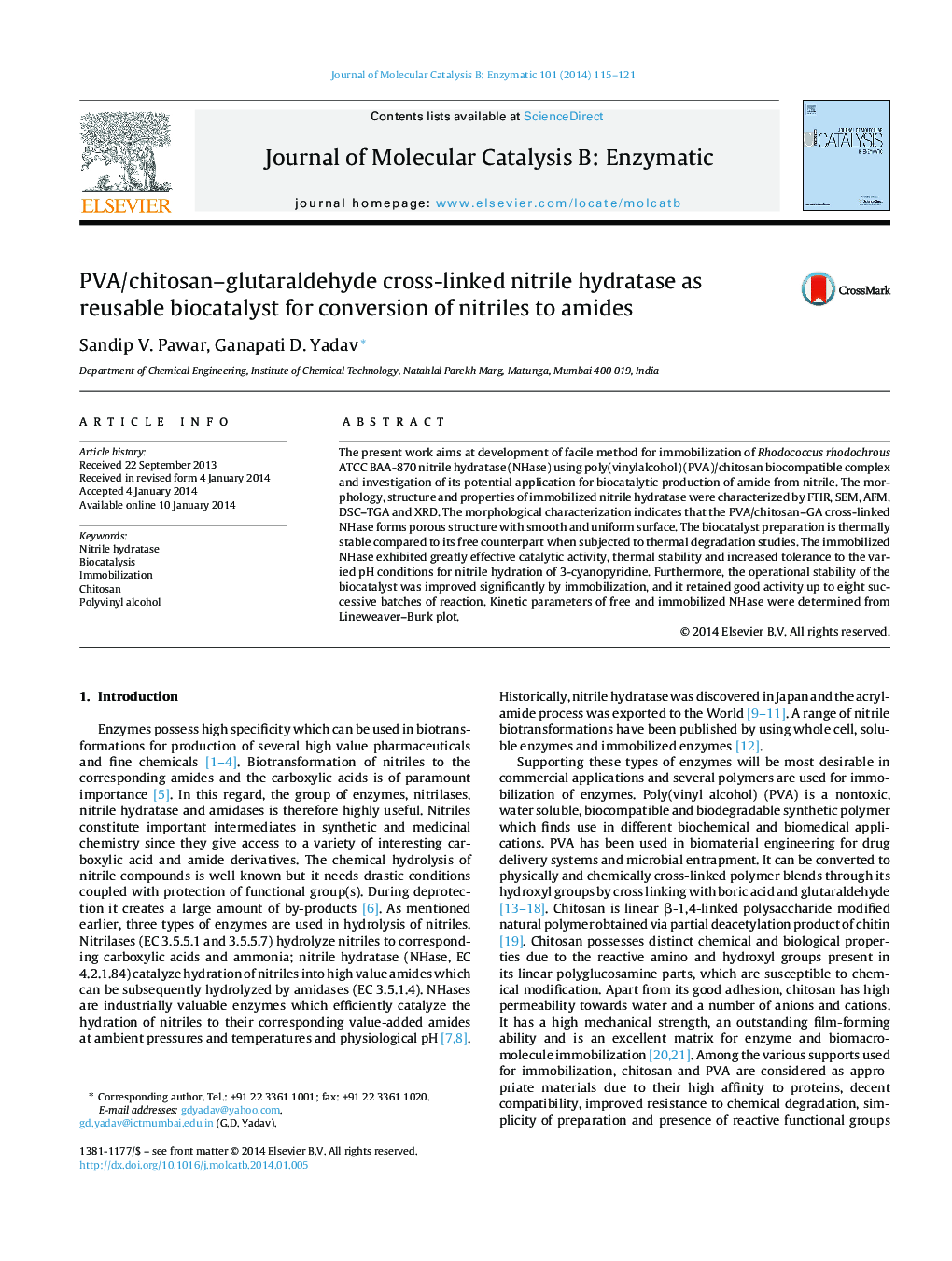| Article ID | Journal | Published Year | Pages | File Type |
|---|---|---|---|---|
| 69729 | Journal of Molecular Catalysis B: Enzymatic | 2014 | 7 Pages |
•Facile method for immobilization of nitrile hydratase using PVA/chitosan.•Characterization by FTIR, SEM, AFM, DSC–TGA and XRD.•High catalytic activity, thermal stability and increased tolerance to the varied pH.•Hydration of 3-cyanopyridine with excellent reusability.•Kinetic parameters of free and immobilized NHase from Lineweaver–Burk plot.
The present work aims at development of facile method for immobilization of Rhodococcus rhodochrous ATCC BAA-870 nitrile hydratase (NHase) using poly(vinylalcohol) (PVA)/chitosan biocompatible complex and investigation of its potential application for biocatalytic production of amide from nitrile. The morphology, structure and properties of immobilized nitrile hydratase were characterized by FTIR, SEM, AFM, DSC–TGA and XRD. The morphological characterization indicates that the PVA/chitosan–GA cross-linked NHase forms porous structure with smooth and uniform surface. The biocatalyst preparation is thermally stable compared to its free counterpart when subjected to thermal degradation studies. The immobilized NHase exhibited greatly effective catalytic activity, thermal stability and increased tolerance to the varied pH conditions for nitrile hydration of 3-cyanopyridine. Furthermore, the operational stability of the biocatalyst was improved significantly by immobilization, and it retained good activity up to eight successive batches of reaction. Kinetic parameters of free and immobilized NHase were determined from Lineweaver–Burk plot.
Graphical abstractFigure optionsDownload full-size imageDownload as PowerPoint slide
